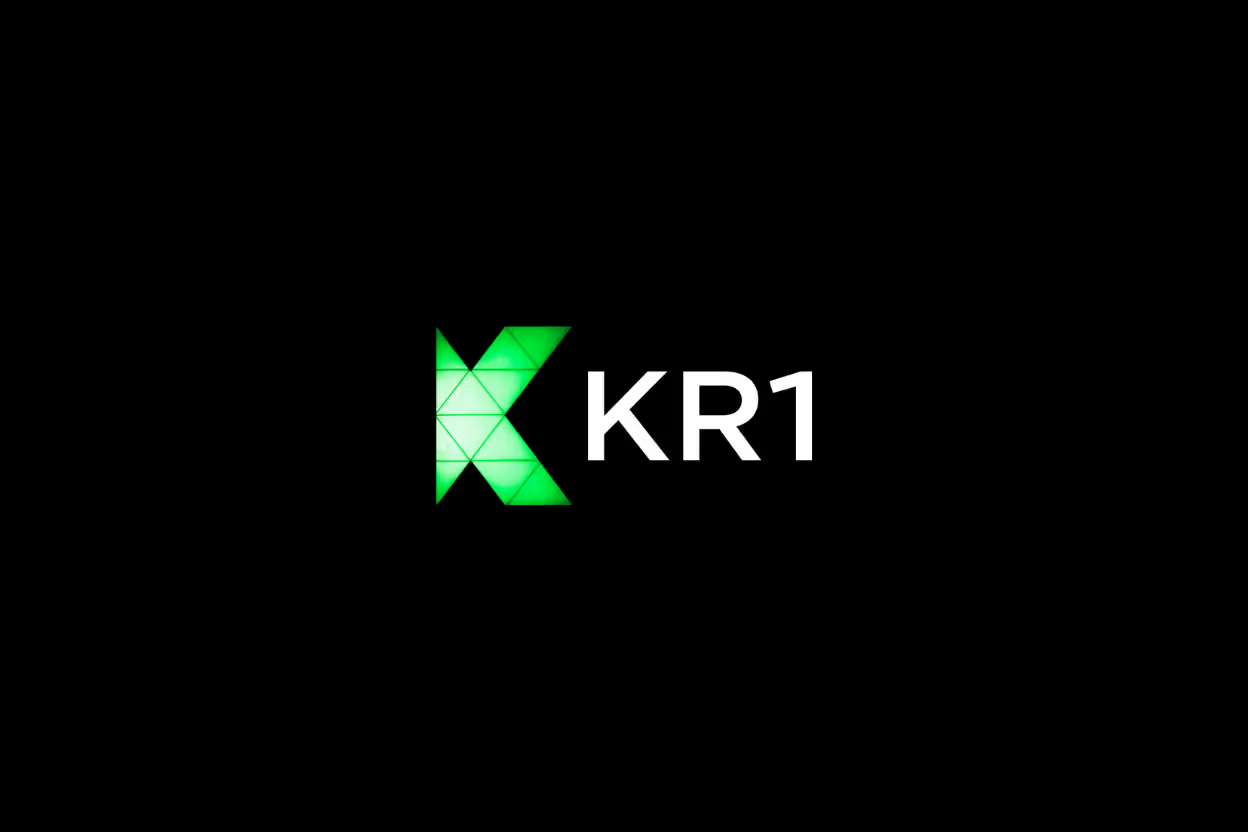Not every protocol launches with a splashy roadmap or bold guarantees. In fact, some of the projects that deliver the highest returns start by setting almost no expectations at all. These protocols cut through the noise by letting results speak first and loudest.
Why do some teams choose a quiet launch over hyped marketing? How can a protocol with zero promises attract serious attention from founders and VCs? This approach raises fair questions about what creates real value in web3 and why users and backers flock to the unexpected.
You’ll see why low-expectation launches continue to win trust, drive powerful organic adoption, and spark fresh curiosity across the industry. For founders and investors alike, what matters isn’t the promise at the start, it’s the proof of real alpha that follows.
What Does It Mean to Launch with 'No Promises'?
Launching with “no promises” strikes a nerve in crypto. Teams step onto the stage with barebones announcements, stripped of wild claims or flashy timelines. There are no guarantees, no token prediction charts, and no sets of milestones lined up like a parade. Instead, founders invite users and potential investors to participate based purely on curiosity or conviction. Does this hands-off approach set projects up for skeptical markets, or does it give them a cleaner start?
The Psychology Behind Underpromising
Stripping away promises is a deliberate move. For many founders, it’s about managing risk and shaping early narratives. Over-promising sets a trap: missed deadlines breed frustration, patchy features create distrust, and public failures fuel relentless social media churn. Keeping things understated gives teams room to maneuver and fix small problems before they become headline-making disasters.
Teams often take this path for several reasons:
- Contain the hype cycle: When projects don’t hype up unbuilt features, there’s less mania around launch. It cuts down on reckless speculation.
- Build authentic trust: Trust grows from visible progress, not inflated expectations. Protocols prove themselves in real time instead of trying to sell future dreams.
- Reduce legal risk: Legal pressure ramps up when teams promise returns or claim a certain outcome. Saying less up front can help protect against regulatory scrutiny.
- Test product-market fit quietly: Early iterations often break or flop. Founders can learn and adjust in peace without social media blowback.
Why would a team refuse to promise features or returns? It’s often about focusing more on execution than on selling just a story. Founders give advanced users, VCs, and insiders a shot to see value where it’s being built, not where it’s being hyped.
Community Reactions and Narratives
Communities react in surprisingly mixed ways to this approach. Some show instant skepticism, asking, “What are these guys hiding?” Others are drawn in by the mystery and sense of a fair playing field. With no official promises, there’s no baggage from broken commitments, but there’s also less obvious upside on day one.
How do early users decide if joining is worth it? They typically ask themselves:
- What past work or reputation does the team have?
- Can I see any activity, code commits, or early positive signals?
- Are other sharp builders or respected investors quietly joining?
- Does the project feel transparent even without a detailed roadmap?
Instead of betting on words, risk-tolerant users may comb through social channels or early product demos, looking for hidden gems. Curiosity and a hunger for asymmetric returns keep them engaged. Investors may see an opportunity in projects that leave the playing field open, rather than crowding the narrative with locked-in roadmaps.
Sometimes, projects that launch with no grand declaration end up creating new templates for open development. They show that real alpha doesn’t come from loud promises, but from consistent delivery. In the end, the “no promises” method can spawn cult followings and richer narratives than a standard marketing blitz, driven by word of mouth and actual output instead of canned PR statements.
How These Protocols Deliver Alpha Without Hype
Protocols that skip the loud promises and let results speak build trust in a way hype-driven projects rarely do. Instead of chasing short-term attention, they focus on real growth, often noticed first by the sharpest technical users and patient investors. Let's look at how these protocols drive adoption and stay ahead of the noise.
Organic Growth and Genuine Adoption
When a protocol avoids loud marketing, every user counts. Growth happens through true product value and satisfaction, not through paid influencers or headline-grabbing partnerships. People stick around because the protocol actually solves a problem or adds clear value to their stack.
- Word-of-mouth becomes the marketing engine. Founders build features that their early users rave about in group chats or private calls, naturally drawing in others who trust their network.
- Metrics matter more than memes. Steady increases in transactions, wallets, or integrations paint a better picture than trending hashtags or airdrop speculation.
- Adoption is sticky. When people discover a protocol organically, they dig in to learn, experiment, and contribute, instead of just showing up for a quick token grab.
Investors who chase narratives and VCs searching for outsized returns notice these organic signals quickly. They see not just user numbers, but actual usage—projects with real daily volume and community input, not inflated by incentives or advertising. When a protocol’s traction comes with no roadmap or grand claims, its staying power stands out.
Ever ask yourself why certain tools seem to win quietly, yet hold onto their gains even as attention shifts? Organic, honest growth leaves a digital paper trail that careful investors use to spot genuine staying power.
Code and Product Over Hype
Shouting updates from the rooftops gets noisy fast, but delivering with code and functional products earns attention that lasts. Technical users and early contributors respect projects that commit to shipping, not just announcing.
- Regular deployments shine brighter than announcements. Teams who push updates to GitHub or ship new features on chain get noticed in dev circles and among early builders.
- Smart tokenomics reward patience and belief. Protocols that launch without wild pre-sale promises or instant liquidity often reward users who stick around, with fairer distribution models and fewer mercenary farmers.
- Product feedback happens in the open. Real users engage when they see devs responding to bugs, feature requests, and feedback in real time.
Instead of running flashy marketing campaigns, teams invest in well-documented codebases, transparent upgrade cycles and continuous QA. This “show, don’t tell” approach isn’t about flash, but about fundamentals—does it work, and does it keep improving? When VCs and technical founders see a project that ships quietly and steadily, they know the codebase and product matter more than the pitch deck ever could.
Have you noticed that protocols which slowly release working features—and improve week after week—tend to outlast trends? Teams that focus on real delivery build a defensible edge, letting results win over skeptics and early adopters alike.
Lessons for Founders and Investors in Web3
Low-expectation protocols flip the usual playbook for launching and funding projects. Instead of going in with crowded pitch decks and aggressive predictions, these teams stay quiet, work in the background, and show results before asking for trust. Both builders and investors can learn from this method, but they also need to know how to read the signals. How do you know if “promise nothing” is a smart move, or a warning sign?
When Is Promise-Free Good Strategy?
Choosing to give few or no public guarantees can be the right move in several situations. For founders, skipping the hype cycle often limits overexposure and leaves more room to work through early setbacks. Investors, on the other hand, get the chance to spot talent focused on progress, not publicity.
Here are scenarios where holding back on promises works best:
- Product is still experimental or shifting: When tech can pivot rapidly or the market is unclear, talking less avoids the need to backtrack on early claims.
- Loose timelines: Innovation doesn’t punch a clock. Avoid timelines unless your cadence is predictable.
- High legal or reputational risk: In areas where regulators watch for misleading statements, vague public goals shield teams.
- Building for advanced users: If your target market is technical and values outcomes over words, let usage metrics and code speak louder.
Could your own protocol’s early users accept ambiguity in return for raw progress? Would investors respect transparent “progress over promises” if the proof showed up in code or community rather than PR?
Teams often forget that early hype rarely survives first contact with failure or market changes. By not making promises, protocols can focus on shipping and iterating rather than running crisis control when reality sets in.
Red Flags vs. Quiet Confidence
Not all silent teams are visionaries deep in the zone. How can you tell when a project’s radio silence is a sign of focus versus a cover for confusion or lack of momentum? For both founders and backers, learning this difference means everything.
Look for these signs of quiet confidence:
- Consistent on-chain or public activity: Regular GitHub commits, code releases, or even detailed community updates show steady work.
- Open feedback loops: Teams answer questions directly, fix bugs quickly, and aren’t defensive under scrutiny.
- Team reputations: Strong backgrounds or previous high-quality launches are often better predictors than words.
- Quality of engagement: Users or early adopters share genuine insights, not just airdrop speculation.
On the other hand, here are warning signs the silence isn’t part of a plan:
- No visible activity: Months of inactivity, empty code repositories, or no mainnet progress should make you pause.
- Cryptic or evasive answers: Teams who dodge questions rather than honestly saying “we aren’t ready yet” risk losing credibility.
- Sudden pivots with no context: Frequent changes in direction without clear reasoning may hide deeper problems.
Founders can ask themselves: Are we quiet because we’re building, or because we’re avoiding tough topics? Investors should consider whether the data backs up the story, not just the sentiment around it.
The best protocols carry a quiet, steady confidence. Their builders show up in the metrics, the releases, and the honest community discourse, not in promises that never come due. This sets them apart from projects running on spin alone. If you spot regular progress—even without the hype—you’re often looking at a team that will last longer than the latest narrative.
Case Study: The Protocol That Promised Nothing and Delivered Alpha
What happens when a protocol skips the hype and just builds? This approach has birthed some of the most impressive results in web3 circles. Instead of selling a vision, teams set no expectations, focus on shipping, and let users judge by real numbers. So, how do you actually prove progress in such an environment? Let’s break down what tangible success really means and why quiet, disciplined execution often wins.
Milestones Without Hype
True results don’t need a megaphone. For protocols that promise nothing upfront, value shows up in the details:
- Surging Community Growth: Discord or Telegram channels swell with active daily users. It’s not just vanity numbers either—look for genuine questions, feedback, memes, and user-generated guides. Growth comes from real interest, not fake giveaways.
- Partnerships by Invitation: Other protocols or DAOs reach out for integrations. These are organic collaborations, not paid co-marketing deals. When you see new bridges, strategic staking partners, or wallets adding support, that’s proof something special is brewing.
- Onchain Activity: Block explorers don’t lie. Transactions go up, contract calls multiply, and new wallet addresses join daily. Even without a native token live, real usage compounds over weeks and months. Daily, not just weekly or monthly, volume is the strongest signal.
- Developer Metrics: Watch GitHub and other repos for steady commits and rapid bug fixes. Code tells the story better than promises ever could.
- Retention Over Hype: Are users sticking around after trying the protocol? A high ratio of recurring users to new signups signals lasting value.
Do you ever scroll through a protocol’s analytics and spot clear spikes in usage without a marketing push? That’s the kind of data that savvy backers hunt for. Instead of flashy milestones, look for the pulse of daily engagement and real adoption.
Why It Worked: Key Factors
What makes this “promise nothing, deliver alpha” playbook so effective? A few principles separate these protocols from the pack:
- Clear, Measurable KPIs: Teams track real user numbers, transaction volume, community questions answered, and feedback loops closed. They skip vague goals and hone in on data that matters.
- Execution Over Optics: Founders resist the urge to drum up hype until there’s something to show. Early demos roll out quietly to private groups, then expand as reliability grows.
- Feedback is Gold: Teams that listen closely to their early community turn that input into feature updates or bug squashes within days—not weeks. Fast turnaround builds faith faster than any public promise could.
- Earning Trust Through Consistency: Regular updates, even small ones, earn loyalty. They show that the team is present, responsive, and accountable.
- Open, Authentic Communication: When questions come, answers are honest and clear. No dodging or marketing speak—just updates on what’s finished, what’s next, and what’s changed.
Many founders wonder, “How do I get noticed if I’m not shouting about every win?” The answer: let onchain data and community sentiment do the work for you. Founders should remember that early adopters prefer teams who show up in the data.
For readers building or backing their own protocols:
- Track only what matters. Skip vanity metrics—instead, focus on active users, onchain actions, and feedback implemented.
- Iterate fast based on real feedback. Small, constant improvements tell a better story than any prewritten roadmap.
- Build for the users you have. The rest will follow if your product actually solves a problem and your data shows they stick around.
Isn’t it refreshing to follow a protocol whose track record paints a clearer picture than any billboard could? This case study proves that real alpha comes quietly and steadily when you let value, not promises, take center stage.
Conclusion
Promising nothing lets teams work with fewer distractions but demands clear execution. This approach rewards founders who show steady progress, not empty buzz. It also attracts backers who value substance over spectacle. The main challenge is building trust from the ground up, with no marketing cushion or hype to lean on. Teams must prove value with real numbers, useful product features, and honest communication.
For anyone launching or backing a protocol, ask: Are my expectations helping or hurting long-term results? Could doing less talking and more building open new paths to alpha? Sometimes, the strongest signals appear when no one is making noise about them. Thank you for reading—consider how quiet progress could work for your project, and share your thoughts if you've seen this approach succeed (or fail) firsthand.









